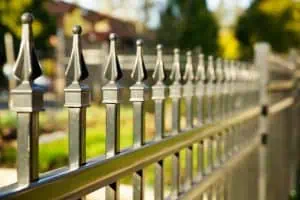How to Install a Chain Link Fence at Home?
Chain link fences are a common choice for many homeowners, and they are generally less expensive than wood or composite fences. They also offer a wide range of customization options and come in various colors, which can increase the appeal of the fence.
(Looking for building a cedar fence? Contact us today!)

Installation of a new fence requires planning and preparation. It involves deciding where to place the fence, what kind of material to use, and whether or not to get a permit for the project. Getting this information early on can save you time and money later.
Start with the fence fabric: The fabric, or mesh, of the chain link fence, is made from galvanized steel or aluminum. It comes in linear feet and can be purchased in 4-foot, 5-foot, or 6-foot rolls. You should buy enough to cover the perimeter of your fence plus any gate openings.
Dig Post Holes: To ensure the fence is structurally sound, you need to dig post holes that are three times as large as the posts’ diameters. This means digging 6 inches to 8 inches for end and corner posts and 4 to 6 inches for line posts. You can use a post-hole digger or a two-person auger to do this job.
Fill in the post holes with concrete: The concrete in the posts will make them strong and secure. It should be the consistency of thick cake batter, but be sure to follow the manufacturer’s instructions on how much concrete to add per hole.
Check the fence for plumpness: Have a helper hold each post plumb or brace it using stakes. Set the posts in the concrete and let them cure for a few days or according to the manufacturer’s instructions.
Pull the fabric taught: The fence will sag if it’s not properly stretched out before installation. A come-along cable puller winch and stretcher bar are necessary for this task. Hook the stretcher bar to a tension bar about 3 feet short of a corner or end post.
Tie Wire: To keep the mesh secure, tie it with a wire that has been bent into a loop. Space the tie wires about every 24 inches along the top rail. Then, attach them to the line posts every 12 inches to 16 inches.
Choose the right fence materials: A variety of fencing material types are available at Lowe’s and The Home Depot. The type of fence that you select can affect the cost of the installation, as well as its durability and strength.
For instance, a galvanized metal fence is typically more durable than a rusted-out vinyl one. It also offers resistance to rust and corrosion. A black vinyl fence, on the other hand, costs more than a white or green fence.
It’s worth asking your neighbors about splitting the cost of a fence for the portion that sits between both of their homes, as this can reduce the total cost of installing the fence. Alternatively, you can hire a company to install the fence for you. These companies typically have a team of experienced workers and equipment on hand, such as a post hole auger, chain saws, and tools for cutting and attaching the fence panels.

